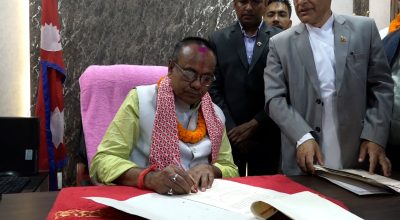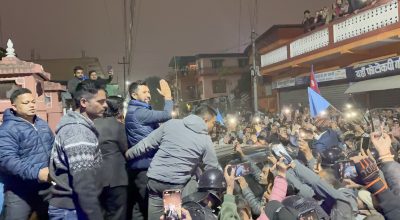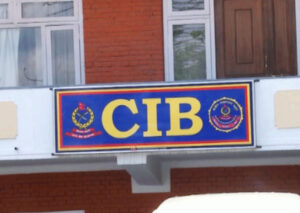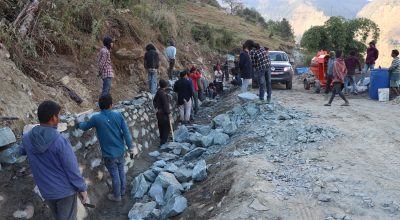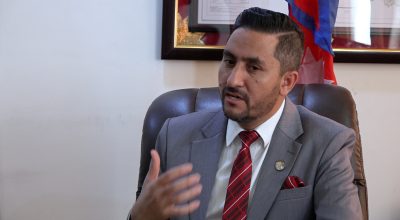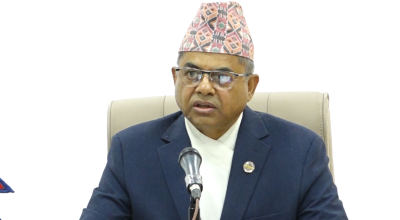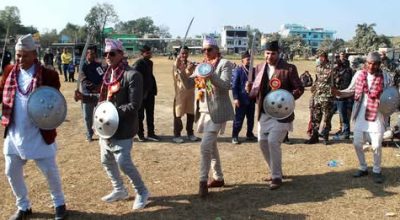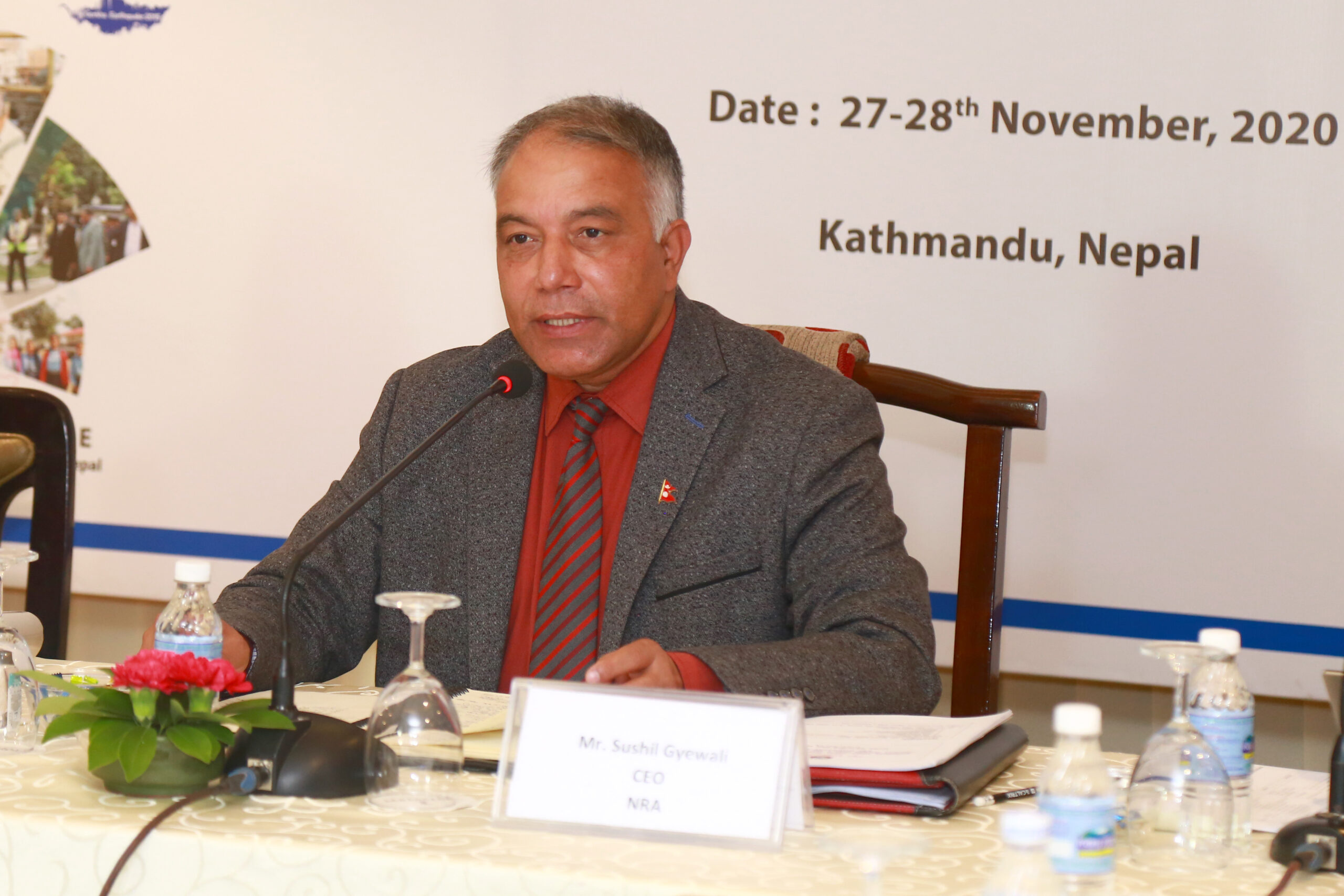
KATHMANDU: The National Reconstruction Authority (NRA) has said that it has made satisfactory achievement in reconstruction and rehabilitation by managing the risks posed by COVID-19 pandemic.
In a press conference on Friday, the Chief Executive Officer at NRA, Sushil Gyewali, said, “Six years after the earthquake, we now stand here with better and stronger reconstruction than before. We are very pleased to inform you that Nepal’s reconstruction has now reached the stage of completion despite various hurdles and complexities.”
It has been six years since the devastating earthquake of April 25, 2015 with its epicenter in Barpak of Gorkha caused a huge loss of lives and properties. NRA was established on December 25, 2015 with a primary aim to reconstruct and rehabilitate the structures damaged in the earthquake and its aftershocks.
He further said, “We are, at the moment, committed to complete the reconstruction of basic infrastructures within this fiscal year and making necessary plans to handover the remaining works to the concerned government agencies.”
Sixty four months after its establishment, the NRA has used disaster as an opportunity and has already reconstructed a large number of private houses, educational and health institutions and cultural heritage sites in 32 earthquake-affected districts and some infrastructures are in the final stages of reconstruction.
According to NRA, there has been 93 percent progress in the reconstruction of private houses which is the main area. Out of 811,754 earthquake beneficiaries who have signed agreement for the government grant, 753,104 beneficiaries (93 percent) have started rebuilding their houses. First installment has been distributed to 99.86 percent beneficiaries, 86.78 percent beneficiaries have received the second installment while 78.66 percent has received the third and final installment.
The NRA has carried out a special campaign to rebuild the houses belonging to vulnerable groups by mobilizing 900 mobile masons and 254 social mobilizers. Various partner organizations have also been mobilized in this process. Many houses of these vulnerable groups are currently being built.
Similarly, we have provided land to 4,720 beneficiaries who had been living in 299 vulnerable areas after the earthquake. We have also created an environment to build houses of 12,788 landless beneficiaries by providing necessary land.
CEO Gyewali said, “As for rebuilding cultural heritage sites, 493 out of 920 sites have been reconstructed while 288 of them are under-construction. President Bidhya Devi Bhandari has already inaugurated the reconstructed Ranipokhari and Prime Minister KP Sharma Oli is set to inaugurate Dharahara on April 24 at 11 am.”
Prime Minister has already inaugurated the northern, southern and eastern facades of Singh Durbar, the main administrative center of the nation, on February 15 this year and the Office of the Prime Minister and Council of Ministers has already started functioning from reconstructed building.
The restoration of historic buildings Keshar Mahal, Babar Mahal, Bal Mandir and Ranoddip Palace in the Narayanhiti Museum premise is currently going on. The master plan for the integrated development of the center of Kathmandu that includes Ranipokhari, Tundikhel, Ratna Park, Khulla Manch (Open Air Theater), Bhrikuti Mandap, Rangshala (Dashrath Stadium) and Loktantrik Sangrahalaya (Democratic Museum) is in the final stage of approval. Master plans have also been prepared for the development of Narayanhiti Museum, Gorkha and Nuwakot durbar areas and seven archaeological heritage sites of the Kathmandu Valley, the NRA said.
Out of 402 monasteries that needed to be restored, 294 have completed. Out of 895 monasteries that needed to be rebuilt, process has begun to rebuild 36 of 264 monasteries that are more than 100 years old and have more than 2,000 square feet of plinth area. Similarly, the construction process has also begun of 101 of 631 monasteries that are less than 100 years old and have less than 2,000 square feet of plinth area.
As for the educational institutions, out of 7,553 schools needed to be rebuilt, 83 percent of them have been rebuilt while 17 percent schools are currently under-construction. We aim to complete the reconstruction of these schools within this fiscal year.
Out of 1,197 health institutions, 698 have been rebuilt and rebuilding of 296 is continuing.
Similarly, rebuilding of 90 percent out of 415 government buildings has completed. Reconstruction of 214 out of 216 buildings belonging to various security agencies which are being built under the NRA has completed.
During this period, 525 kilometers road out of 762 kilometers needed to be rebuilt has been completed and the rest will be complete within this fiscal year.
During the last five and a quarter years of the NRA, it has made significant achievement despite many challenges like political instability, blockade, lack of financial and human resources, geographic difficulties, transition to federalism, election of three tiers of governments and integration of staff.
Furthermore, the Covid-19 pandemic created a major obstacle when the reconstruction works were in full speed. Other works became minor issue in front of saving people’s lives. The reconstruction works gathered pace after the lockdown ended.
“You are already aware that the government extended the NRA’s tenure till December 2021 after the Covid-19 halted the progress made in the reconstruction. In the added one year period, the NRA will carry out its regular work till the end of this fiscal year (mid-July). In the period from July 16 to December 25, the NRA will hand over all plans and programs to the concerned ministries and government agencies, except the reconstruction of Ranipokhari, Dharahara, western façade of Singh Durbar and Ranoddip Durbar with the Narayanhiti Museum.” Gyewali said.
Our neighboring and friendly countries have rendered a huge support in our endeavor to rebuild. Out of 410 billion rupees committed at the donors’ conference, 67 billion rupees were spent in the rescue and relief efforts while 49 billion rupees from the Indian Exim Bank has been reimbursed to the government of Nepal. Hence, the actual commitment was only 294 billion rupees. Out of this, the assured amount agreed by donors is 243 billion rupees.
Likewise, out of about 90 billion rupees agreed for mobilization with non-governmental organizations, 72 billion rupees have already been mobilized. In this way, all amount pledged by the donors has been guaranteed to be mobilized. We are proud to mention here that all the donor agencies and friendly countries have expressed their satisfaction on the progress made in Nepal’s reconstruction.
The total budget requirement for reconstruction now is 488 billion rupees as per the revision made on the basis of approved five-year reconstruction and rehabilitation plan. Out of this, the government of Nepal and donor agencies has spent 357 billion rupees until April 12, 2021.
CEO Gyewali said, “The reconstruction works we have carried out is the biggest in terms of damages incurred. Besides, this is also geographically very complex and challenging due to the available human resources and finances compared to developed countries. Therefore, this is no doubt a satisfactory issue for us that we are now taking our responsibility to its logical end.”






